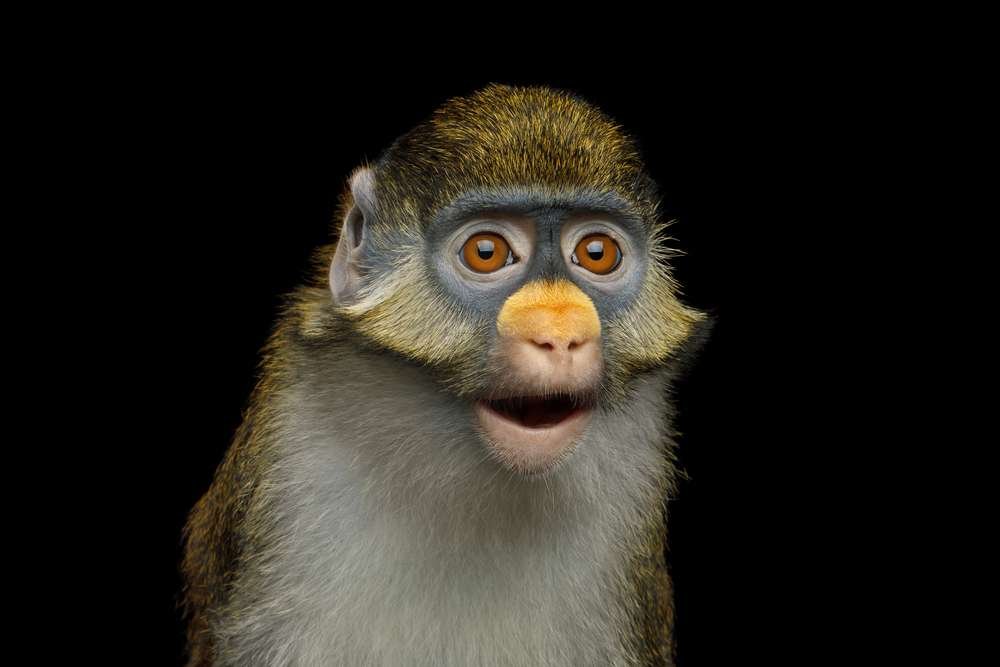Red Tailed Monkey
( black-cheeked white-nosed monkey, red-tailed guenon, redtail monkey, or Schmidt's guenon )
- Cercopithecus ascanius
- IUCN Status: Least Concern
- Trend: increasing

- Kingdom: Animalia
- Phylum: Chordata
- Class: Mammalia
- Order: Primates
- Suborder: Haplorhini
- Family: Cercopithecidae
- Genus: Cercopithecus
Share:
General Information
Red-tailed monkeys are social primates that form groups that can range in size from 7 to 30 individuals. They can be found throughout central, east and west africa. They have one of the longest monkey tails and can use them for balance.
Fun Facts!
Description
- Length: 30 - 60 cm
- Weight: 2.7 - 4.5 kg
- Lifespan: 28 yrs
Ecology and Behaviour
Red-tailed monkeys communicate using different methods which are characteristic of communicating specific behaviors or things. Physical and vocal communication are used between members of social groups of these monkeys to demonstrate social dominance, submissiveness, or greeting. Red-tailed monkeys practice staring or staring with their mouth open. When these monkeys implement staring, they lift their eyebrows to retract the skin on their forehead which makes the skin on the face expand backwards revealing the underneath of their eyelids. Red-tailed monkeys are primarily fructivorous, but are considered omnivorous because they will eat leaves, flowers, or insects in times where fruit is scarce.
Conservation
They are listed as “least concern” on the IUCN red list as their numbers remain stable and steadily thriving. Despite having a number of predators and their habitats being taken, they still continue to thrive.
Distribution and Habitat
It is found in Angola, Cameroon, Central African Republic, Democratic Republic of the Congo, Kenya, Rwanda, South Sudan, Tanzania, Uganda, Zambia, and possibly Burundi. Although native to this region, it has spread north and south as well as it can survive in different habitats and under different conditions. It is a distinct creature in its habitats and is gradually becoming endangered due to deforestation and over-exploitation through hunting and predation.
Interaction with humans
They have been hunted and treated as pests by humans.
No donation to this project yet.
| M | T | W | T | F | S | S |
|---|---|---|---|---|---|---|
| 1 | 2 | 3 | 4 | 5 | 6 | 7 |
| 8 | 9 | 10 | 11 | 12 | 13 | 14 |
| 15 | 16 | 17 | 18 | 19 | 20 | 21 |
| 22 | 23 | 24 | 25 | 26 | 27 | 28 |
| 29 | 30 | 31 | ||||


